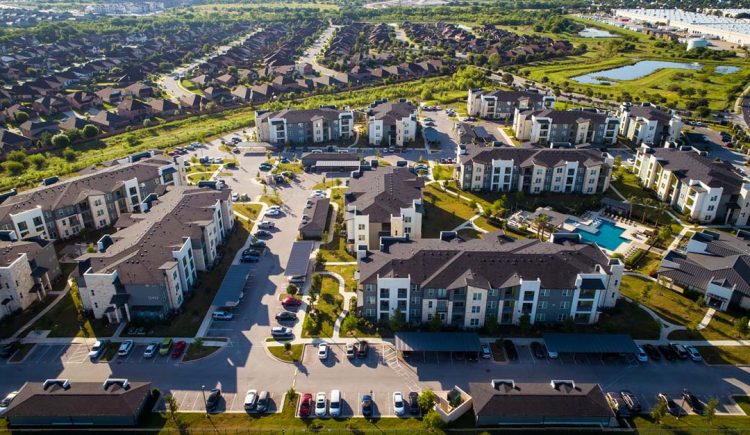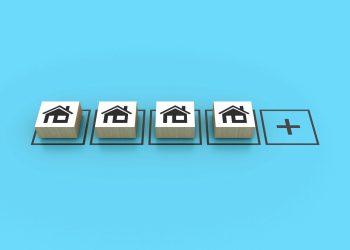Strong multifamily activity pushed overall housing starts up in August but single-family starts have dipped in response to continued supply chain and labor challenges. Total starts increased 3.9% to a seasonally adjusted annual rate of 1.62 million units, according to the latest data from the U.S. Department of Housing and Urban Development and the U.S. Census Bureau.
The August reading of 1.62 million starts is the number of housing units builders would begin if development kept this pace for the next 12 months. Within this overall number, single-family starts decreased 2.8% to a 1.08 million seasonally adjusted annual rate, but are up 23.8% year-to-date. The multifamily sector increased 20.6% to a 539,000 pace.
The breakdown:
Housing Starts: 1.62 million (+3.9%% month-over-month, +17.4% year-over-year)
Multifamily Starts: 530,000
Single-Family Starts: 1,054,000
Building Permits: 1.73 million (+6.0% month-over-month, +13.5% year-over-year)
Multifamily Permits: 632,000
Single-Family Permits: 1,048,000
Completions: 1.33 million (-4.5% month-over-month, +9.4% year-over-year)
Multifamily Completions: 356,000
Single-Family Completions: 971,000
Regional year-to-date data:
Midwest: +14%
South: +20.2%
West: +23.9%
Northeast: +35.96%
What the industry is saying:
“Total housing starts and housing permits made decent gains in August compared to the month prior, but the focus was on multifamily units. Single-family housing starts fell 2.8% while single-family housing permits, a gauge for future activity, were essentially unchanged after falling in the past four months. Multifamily starts, comprising mostly apartments, increased by 20.6% while multifamily permits rose 15.8%.
“There is certainly a housing shortage, as reflected in the low inventory of homes for sale and in low rental vacancy rates. However, a shift toward rental buildings means less access to homeownership over the long run and the accompanying opportunity for wealth gains. Home-price gains will surely moderate after experiencing gains of nearly 20% in the first half of this year. But given the housing shortage and the lack of big increases in the construction of single-family homes, home prices will continue to move higher than most people’s income gains. That’s good news for property owners, but bad news for those wanting to become homeowners.” — Dr. Lawrence Yun, Chief Economist, National Association of REALTORS®
“Single-family construction is normalizing at more sustainable levels after an increase in building material pricing. Demand remains strong, but the market is facing increasing housing affordability issues after a run-up in new and existing home prices. Multifamily construction increased in August, with NAHB expecting a solid gain for apartment construction in 2021 after a slight decline last year.” — Chuck Fowke, Chairman, National Association of Home Builders
“More inventory is coming for a market that continues to face a housing deficit. The number of single-family homes under construction in August-702,000-is the highest since the Great Recession and is 32.7% higher than a year ago. While some building materials, like lumber, have seen easing prices, delivery delays and a lack of skilled labor and building lots continue to hold the market back.” — Robert Dietz, Chief Economist, National Association of Home Builders
“The pace of new construction reflected homebuilder shifts toward higher margin projects amid fluctuating costs. As August saw home builder sentiment dip over concerns of slipping buyer traffic and sales, builders sought permits for more multifamily projects. However, this week’s September sentiment numbers show a rebound is in the works, as residential construction companies work through their order backlog and look forward to increased traffic heading into 2022.
Real estate markets are grappling with a decade of underbuilding, which has pushed this year’s buyers to pay record-high prices for a tight number of homes for sale. As millennials—the largest generation in our country’s history—came of age during the last 10 years, new construction volume lagged, creating a shortage of 5.2 million new homes. Moreover, completed new homes have been mostly aimed at the premium segment of the market, with the share of new-home sales priced at or below $300,000 dropping from 43% of total in 2018, to 32% in the first half of 2021.
“For builders, demographics offer tremendous potential, as the millennial generation is in its peak household formation years. In a promising recent development for builders and buyers alike, California’s recent legislative move to expand access to more homes through relaxing single-family zoning standards could serve as a model for other states and open the door for an influx of affordable new construction supply.” — George Ratiu, Manager of Economic Research, realtor.com®
“New-home starts recovered in August, following a brief period of decline in July due to supply chain issues. Additionally, the backlog of homes authorized but not started has grown to record levels over the late spring and summer, and as builders are able to secure materials and labor it is not surprising to see starts begin to pick back up. This backlog is a promising metric, and while some of the pipeline of units may be canceled, it is likely that a good share of the backlog will make it to market due to robust housing demand.” — Kelly Mangold, Principal, RCLCO Real Estate Consulting











